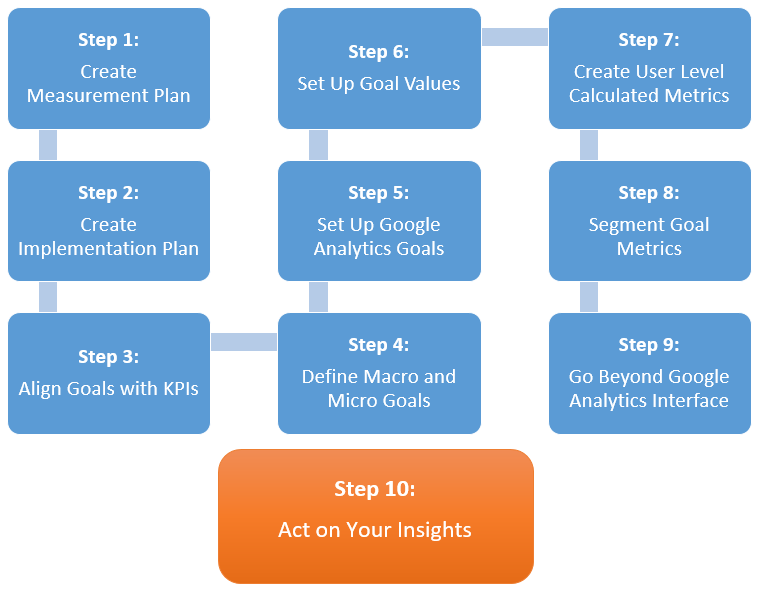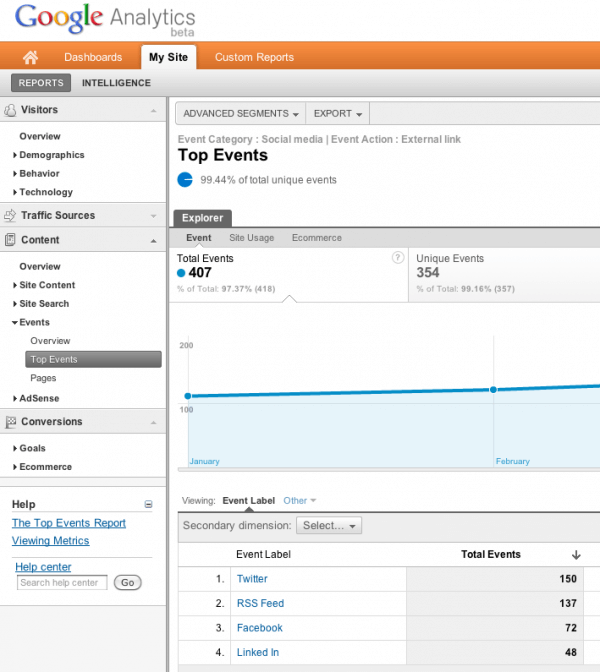Discover the Limitations of Google Analytics Goals: Introducing the Information Types That Remain Untrackable
As businesses progressively depend on data-driven decision-making, comprehending the restrictions of tools like Google Analytics comes to be extremely important. While Google Analytics Goals deal useful insights right into individual interactions, there exist data types that thwart tracking, posturing difficulties to a comprehensive understanding of individual behavior.
Insufficient Individual Journey Tracking
Insufficient user journey monitoring within Google Analytics can prevent the capability to accurately examine user actions. When the user journey is not totally tracked, there are spaces in the data that avoid a detailed understanding of exactly how individuals engage with a web site. This lack of understanding can bring about missed chances for optimization and improvements to the user experience.
One common issue with insufficient individual trip monitoring is the lack of ability to see the complete course that customers take before finishing a goal or leaving the website. Without this information, it is challenging to recognize where customers may be coming across challenges or friction points that prevent them from transforming. In addition, insufficient monitoring can cover the impact of particular advertising and marketing efforts or website changes on customer actions.
To address this limitation, it is crucial to establish correct tracking mechanisms within Google Analytics to capture the entire user journey. This might involve establishing occasion monitoring, goal funnels, or using devices like Google Tag Supervisor to guarantee that no vital interactions go unrecorded. By acquiring a thorough view of the user journey, website proprietors can make even more informed choices to enhance individual involvement and drive conversions.
Attribution Obstacles
Navigating through acknowledgment obstacles in Google Analytics calls for an extensive understanding of exactly how various touchpoints contribute to the general conversion procedure. Attribution difficulties emerge from the complexity of modern consumer trips, where customers connect with multiple channels prior to converting. Google Analytics gives different acknowledgment designs like first touch, last touch, and direct, each providing a different viewpoint on just how credit report is appointed to touchpoints along the conversion course. Nonetheless, these models may not constantly accurately reflect the real influence of each touchpoint on the conversion.
One usual attribution difficulty is the problem in associating conversions to the correct source, especially in situations where customers engage with numerous networks before converting. This can cause errors in identifying which advertising efforts are driving the most conversions. Additionally, cross-device tracking poses one more acknowledgment challenge, as customers typically switch over in between tools throughout their journey, making it testing to track their interactions effortlessly. Marketing professionals should very carefully analyze and evaluate acknowledgment information to make informed decisions and enhance their marketing approaches successfully.
Offline Conversions
Offered the difficulties connected with associating conversions accurately in online channels, the measurement of offline conversions presents a considerable opportunity for marketers looking for a more extensive understanding of their clients' journey. Offline conversions refer to activities that clients take in the physical world, such as making acquisitions in brick-and-mortar stores or over the phone, participating in events, or involving with printed materials - what data is google analytics goals unable to track. These conversions are crucial for organizations that run both online and offline, as they give beneficial understandings right into the effectiveness of marketing campaigns across various touchpoints
Tracking offline conversions traditionally posed a substantial obstacle for marketing professionals, as it was challenging to connect these actions back to particular on the internet communications precisely. Nevertheless, with improvements in innovation, such as the combination of CRM systems, special identifiers, and voucher codes, businesses can currently link the gap in between online and offline data to obtain a much more holistic view of customer actions. By efficiently gauging offline conversions, online marketers can maximize their techniques, allocate resources more efficiently, and eventually enhance the other total consumer experience.
Cross-Device Tracking
Cross-device tracking plays a critical role in recognizing the interconnected nature of consumers' electronic communications across several devices. In today's omnichannel globe, where individuals More Info perfectly change between mobile phones, tablet computers, and desktops, tracking their habits throughout these tools is important for marketers to acquire a thorough view of their client trip.

Furthermore, personal privacy worries and policies such as GDPR and CCPA have additionally difficult cross-device monitoring. With customers demanding more control over their data and raised restrictions on tracking technologies, marketing experts need to discover ingenious and privacy-compliant ways to connect customer communications across devices.
Dynamic Web Content Involvement
Understanding customer interaction with vibrant material is essential in enhancing digital advertising and marketing approaches for improved audience interaction. Dynamic web content refers to internet site aspects that change based upon individual behavior, choices, or various other aspects, providing an individualized experience. Tracking customer communications with vibrant material poses obstacles for traditional analytics tools like Google Analytics.
While Google Analytics can track standard interactions like clicks and web page views, it may battle to catch even more nuanced interactions within dynamic content. what data is google analytics goals unable to track. Metrics such as time invested on certain dynamic aspects, hover actions, or communications within pop-ups are usually not easily measurable using conventional tracking techniques. This limitation impedes marketers' capability to fully understand how individuals are involving with vibrant material and tailor their methods as necessary

Conclusion
Finally, Google Analytics objectives have constraints in tracking incomplete user journeys, associating conversions precisely, catching offline conversions, tracking cross-device interactions, and gauging dynamic content interaction. These restrictions highlight the value of exploring additional tracking approaches and devices to acquire a much more detailed understanding of individual click this link behavior and conversions past what Google Analytics can give.
While Google Analytics Goals deal valuable insights into customer communications, there exist information types that elude tracking, posing difficulties to an extensive understanding of user behavior.Insufficient user trip monitoring within Google Analytics can impede the capability to precisely assess customer habits. When the user journey is not completely tracked, there are gaps in the information that stop a comprehensive understanding of just how customers connect with a website.One usual issue with insufficient individual journey tracking is the failure to see the full path that customers take previously completing a goal or leaving the website. By getting a detailed view of the customer trip, site owners can make more educated choices to boost customer interaction and drive conversions.